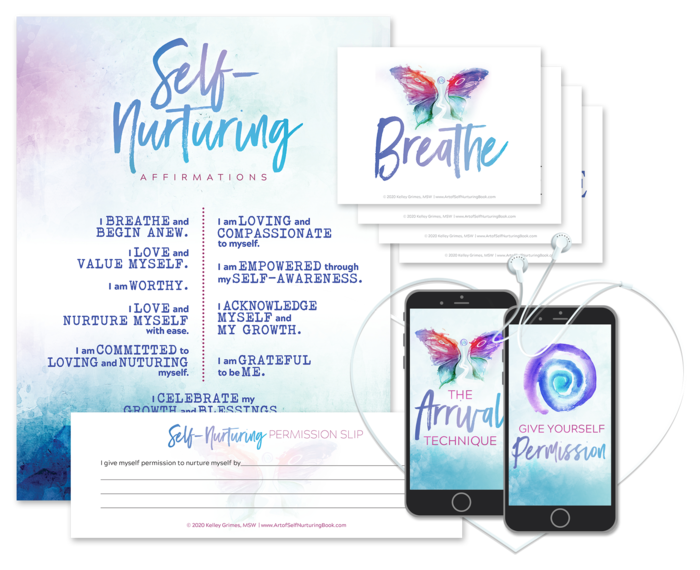“Resilience is knowing that you are the only one that has the power and the responsibility to pick yourself up.” ~Mary Holloway
In a time of continued change and uncertainty in our world, learning to cultivate resilience is essential for staying grounded and empowered. Resilience is our ability to bounce back from difficult experiences and is similar to self-nurturing in that it can be cultivated over time creating a reserve to draw upon. I am so inspired by the amazing resilience I have witnessed my clients cultivate over the years and will share with you five steps you can take to cultivate resilience in your own life.
I am grateful for Sheryl Sandberg and Adam Grant’s book, Option B: Facing Adversity, Building Resilience and Finding Joy, and their definition that “Resilience is the strength and speed of our response to adversity and we can build it. It isn’t about having backbone. It is about strengthening the muscles around our backbone.”
I love the idea of strengthening the muscles around our backbones since this is more empowering than judging ourselves as weak or strong, and reminds us that cultivating resilience is a practice. Recognizing that we can nurture resilience within ourselves and intentionally improve our ability to bounce back from disappointments, losses, and failure is empowering and nurturing. There are many choices that can nurture our resilience including being grateful for what is good in our lives, developing our capacity to acknowledge and affirm the pain we are feeling, and allowing ourselves time to grieve.
Martin Seligman, a prominent psychologist and author wrote that “We plant the seeds of resilience in the ways we process negative events.” He defined three ways we often undermine our ability to overcome difficult situations, which he calls the 3 P’s: personalization, pervasiveness, and permanence. I find the 3 P’s a wonderful framework to understand what is stopping us from being resilient, as well as a guide to transform our limiting perceptions.
Often when something traumatic happens, we may personalize it believing that we are at fault. We may blame ourselves and feel like there is something wrong with us, which drains our confidence and undermines our ability to respond. We may also believe that this bad experience will affect all other areas of our lives and see the problem as pervasive. We may become overwhelmed seeing the problem growing in our perception and may feel more victimized as a result.
The final “P” or permanence reinforces personalization and pervasiveness as it reinforces a belief that the impact of this experience will last forever. Believing that a traumatic experience is our fault, affects every aspect of our lives, and will impact us forever makes it virtually impossible to overcome the difficult experience. But if we can challenge these beliefs with the following 5 steps, we can cultivate resilience to overcome any hardship.
5 Steps to Cultivate Resilience
1.Embrace Self-Compassion
A powerful self-nurturing tool that I encourage everyone to cultivate for resilence and for transforming one’s habit of self-neglect is self-compassion. Learning to treat ourselves like our own best friend is powerful and healing. Compassion helps us transform our shame about failure by understanding that we have made a mistake but we are not a mistake. Being understanding and compassionate to ourselves allows us to bounce back more quickly and focus on what we can learn from the challenge, rather than getting stuck in self-pity and despair. When we are able to shift from shame to self-compassion we are empowered to recognize new choices we can make and grow from difficult experiences.
Choosing self-compassion is also critical because shame and a sense of unworthiness can prevent us from consistently nurturing ourselves, which leads us to feeling chronically stressed and overwhelmed rather than resilient. Choosing to respond to ourselves with self-compassion is a transformational act of acceptance and love. As Christopher Germer reminds us, “A moment of self-compassion can change your entire day. A string of such moments can change the course of your life.”
2.Be Mindful About What You Say to Yourself
How we talk to ourselves is critical in the process of cultivating resilience. When we respond to ourselves with criticism and judgement we reinforce personalization, pervasiveness, and persistence. For instance, if we find ourselves using the language of “never” and “always” we will reinforce our belief of the permanence of the experience. If you notice yourself using those words, choose to change them to “sometimes” or “lately” and support yourself in seeing more possibilities and the potential for healing or change.
In addition, if you notice that you are blaming yourself for the difficult experience and find yourself using words like, “if only I weren’t,” which reinforces personalization, change the words to “if only I hadn’t”. When we take accountability for our actions instead of blaming and shaming ourselves, we can learn from the situation instead of seeing it as more evidence of our unworthiness.
3.Journal Daily
Journaling is a wonderful healing practice. It provides a space to express how we feel, what we have experienced, and reflect on our thoughts. Writing each day allows us to identify and affirm our feelings and experiences, and recognize our healing and growth over time. In building resilience, creating a safe space to affirm our feelings can be very healing, as well as identifying things we have accomplished to focus our attention on what is going well in our lives and build our confidence.
A recent study found that spending 5-10 minutes each day writing about things that “went well” and “why” resulted in stress levels and mental and physical health complaints decreasing. In addition, when we acknowledge what we feel grateful for in our lives, our accomplishments, our growth and blessings, and joy we have experienced, we rewire our brain to focus on what is going well in our lives providing intrinsic motivation to keep moving forward.
As the remarkable Anne Frank wrote, “I can shake off everything as I write; my sorrows disappear, my courage is reborn.”
4.Ask for Help
Reaching out for help reinforces that we are supported in our lives and is critical for cultivating resiliency. If asking for help is a challenge for you, start by accepting help when it is offered. Over time challenge yourself to start asking for help. Remember people want to be able to help and the larger our support system is, the more resilient we will be able to be!
5.Nurture Yourself Every Day
Cultivating a self-nurturing practice is an ongoing way of cultivating resilience and empowerment in our lives. We cannot give from an empty tank so filling up every day becomes critical to building resiliency in our lives. Identifying the activities that help us feel grounded, connected to ourselves, and filled with joy create the foundation of our self-nurturing practice. Embrace the art of self-nurturing and commit to the practice every day!
Cultivating resilience allows us to bounce back from difficult experiences and feel more empowered and confident. Recognizing that we are stronger and wiser as a result of overcoming our challenges is the hallmark of resiliency. Since we are likely to experience more challenges in our lifetime, cultivating resiliency is a wise and empowering choice.
As the profoundly resilient Maya Angelou reminds us, “I can be changed by what happens to me. But I refuse to be reduced by it.”
May you be inspired to cultivate more resilience as you nurture peace in the world from the inside out!
Peace, love and gratitude, Kelley





